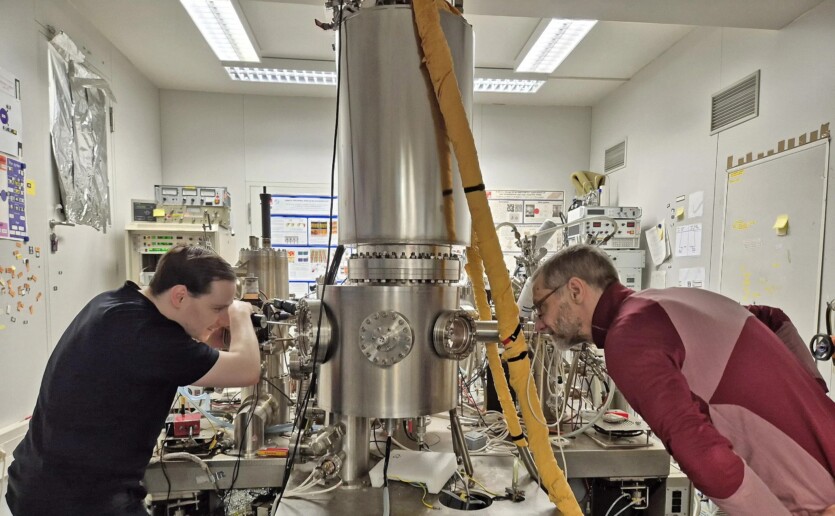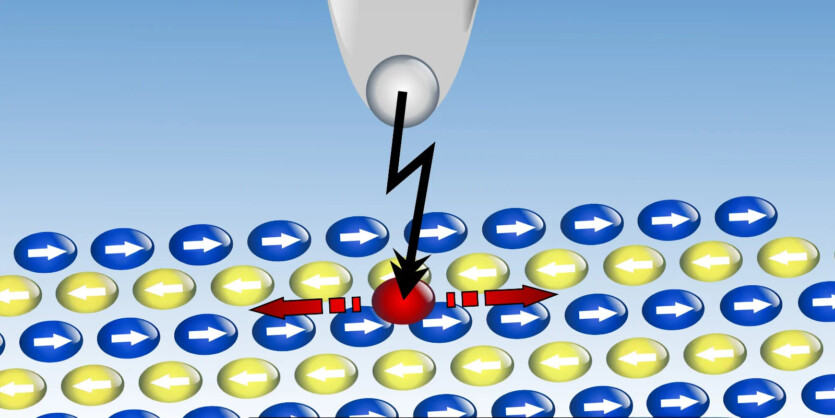
Researchers from the Universities of Hamburg and Kiel in Germany have demonstrated for the first time that atoms can be move in nanomaterials by means of magnetism.
Scientists have used a highly sensitive scanning tunneling microscope for controlling atoms on a specially designed magnetic surface. The experiment was conducted at temperatures close to absolute zero. The scientists were able to place individual cobalt, rhodium, and iridium atoms on a single atomic layer of manganese carefully deposited on a rhenium crystal.
Despite the symmetrical hexagonal structure of the surface, the atoms did not exhibit chaotic motion, as might be expected due to thermodiffusion, but moved sequentially along the corresponding magnetic trajectories. This experiment is a significant step forward in the development of atomic diffusion, which describes the movement of atoms in a material by exchanging places with vacancies in the lattice structure. This process plays an important role in the production of semiconductors and the creation of new nanomaterials.
Although scientists had previously predicted that magnetism could affect the movement of atoms, this is the first time that it has been experimentally confirmed. One of the leading authors of the study, D., professor at the Institute for Theoretical Physics and Astrophysics at the University of California, Stefan Heinze, together with D., Associate Professor of the Department of Physics and Astrophysics Soumya Jyoti Haldar conducted quantum mechanical calculations using a computing network to explain this phenomenon.
The results helped scientists to find out that even rhodium and iridium atoms followed magnetic tracks. Scientists explain that the interaction between the surface and atoms generates a small magnetic moment even in elements that are not naturally magnetic. These moments coincide with the magnetic direction of the manganese layer, causing the atoms to move along certain magnetic directions.

Further studies have shown that it is energetically easier for atoms to move along magnetic rows than across them, due to the magnetic interaction between atoms in the middle and on the surface of the material. The researchers compared this to with tiny rod magnets that are lined up against each other.
According to Soomjyoti Haldara, magnetization occurs due to the magnetic moment of the atom in magnetic elements, such as cobalt. Do not magnetic atoms, such as rhodium and iridium, when they interact with a surface, induce a small magnetic moment that affects the direction of their movement.
«The magnetic properties of a surface can affect the mobility of individual atoms. This opens up new possibilities for controlling the movement of atoms, for example, in applications related to nanotechnology, data storage, or the development of new materials», — explains Soumya Jyoti Haldar.
At the same time, robot and material — in Princeton created «Metabot»
The results of the study were published in the journal Nature
Source: Interesting Engineering

Spelling error report
The following text will be sent to our editors: